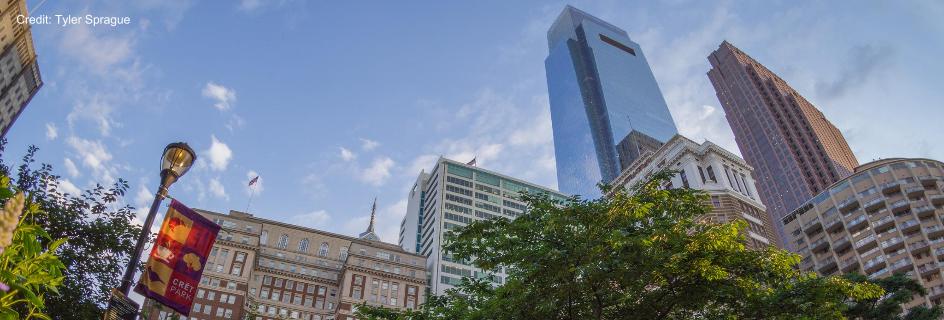- About GPA
- Global Events
- GLOBAL NEWS FROM PHL
- Global Directory
- World Heritage City
- Sustainable Development Goals (SDGs)
- Global Philadelphia Role on Sustainable Development Goals
- Completed Sustainable Development Goals
- SDG#1: No Poverty
- SDG #2: Zero Hunger
- SDG#3: Good Health & Well-Being
- SDG#4: Quality Education
- SDG#5: Gender Equality
- SDG#6: Clean Water & Sanitation
- SDG#7: Affordable and Clean Energy
- SDG #8: Decent Work and Economic Growth
- SDG #9: Industry, Innovation, and Infrastructure
- SDG#10: Reduced Inequalities
- SDG#11: Sustainable Cities and Communities
- SDG#16: Peace, Justice and Strong Institutions
- SDG#17: Partnerships for the Goals
- Press
Home ›
Usiloquy Dance Designs Presents "Ragas and Airs"
Posted on August 15, 2014

Related
Layla El Tannir, for GPA -- Usiloquy Dance Designs creates traditional and cross-cultural productions of the Indian classical dance form Bharatanatyam and conducts educational programs. Its recent “Ragas and Airs” production encompasses a romantic ballad that traveled from colonial East India to South Asia and reached global communities.
On July 26, an audience enjoyed six performances at the Irish Memorial (Front and Chestnut Sts.), followed by a question and answer session, concluding in a workshop on the different hand and foot movements of Bharatanatyam.
Bharatanatyam is an Indian classical dance that had thrived for over 2,000 years in temples of Southern India as a form of dance theater, before making its way into large auditoriums around the world. It tells stories based primarily on Hindu mythology through intricate footwork, hand gestures called “mudra” and facial expressions combined with elaborate costume and jewelry. All the costumes used in “Ragas and Airs” are traditional silk, made to measure and specially designed for the series, from Chennai, India. Usiloquy pushes the confines of traditional Bharatanatyam with influences from global events, culture and heritage.
“Ragas and Airs” is based on an intersection between music and folklore of the Indian and Celtic communities, expanding upon the historic connections between South Asian and Celtic heritage. Choreographically, it pairs Bharatanatyam techniques between the Indian ragas and nrithya melodic modes with traditional neo-Celtic music.
Performances ranged from solos to duos to trios. As the series progressed, more members were used to portray the story and intensify the message. Artistic Director Shaily Dadiala kicked off the performances with “Saucy Sailor,” the quintessential flirtatious exchange between a young man and woman that travels from desire to rejection.
“Mave” praised the goddess Lakshmi, the mother of Vishnu, the representation of the need to belong. Muthuswami Dikshitar, a 17th century poet who lived during the rule of the British East India Company, wrote the lyrics in Sanskrit to Western melodies.
“Kamalasana Vandita” is based on the folk tune "Hungarian Gallopede," with lyrics by Dikshitar. It highlights the textile industry that was largely run by Irish settlers, mostly women, in the Kensington section of Philadelphia.
“The Deer” references the golden deer of the Hindu scripture Ramayana and touches on the concept of salvation. Mrugasheesha and sinhmukha gestures shape the essence of this dance.
“Vagdevi Mamave” is inspired by Vagdevi, her beauty is likened to the lotus flower and is respected by sages, gods and demons alike.
The final performance, “Tani Avatnam” is adapted from “Khanda: 5 Cities,” and Irish jazz performance. It is a collaboration between South India based Karnataka College of Percussion and traditional musicians from Ireland. The movement for this piece was designed around the musical dialogue of the improvisational melodies of jazz and its rhythmic Indian counterpart.
“Ragas and Airs” brings one of the oldest immigrant communities in the Americas to the modern generation. This work is a platform exploring the intersection of diverse genres and cultures.
Since 2008, Dadiala and five company dancers have served over 18,000 members through performances and education programs at more than 50 venues in Pennsylvania, Delaware, New York and India.
“We take 5,000-year-old scripts and portray them in a modern way”, said Dadiala. This movement will help educate the current and future generations on their history, keeping it interesting and relevant.
Dadiala believes that Philadelphia is the perfect place to showcase Usiloquy’s work. “It’s not a coincidence that we are performing in Philadelphia. This is the city where cultures intersect, it feels right.”
Photo courtesy of Layla El Tannir.







